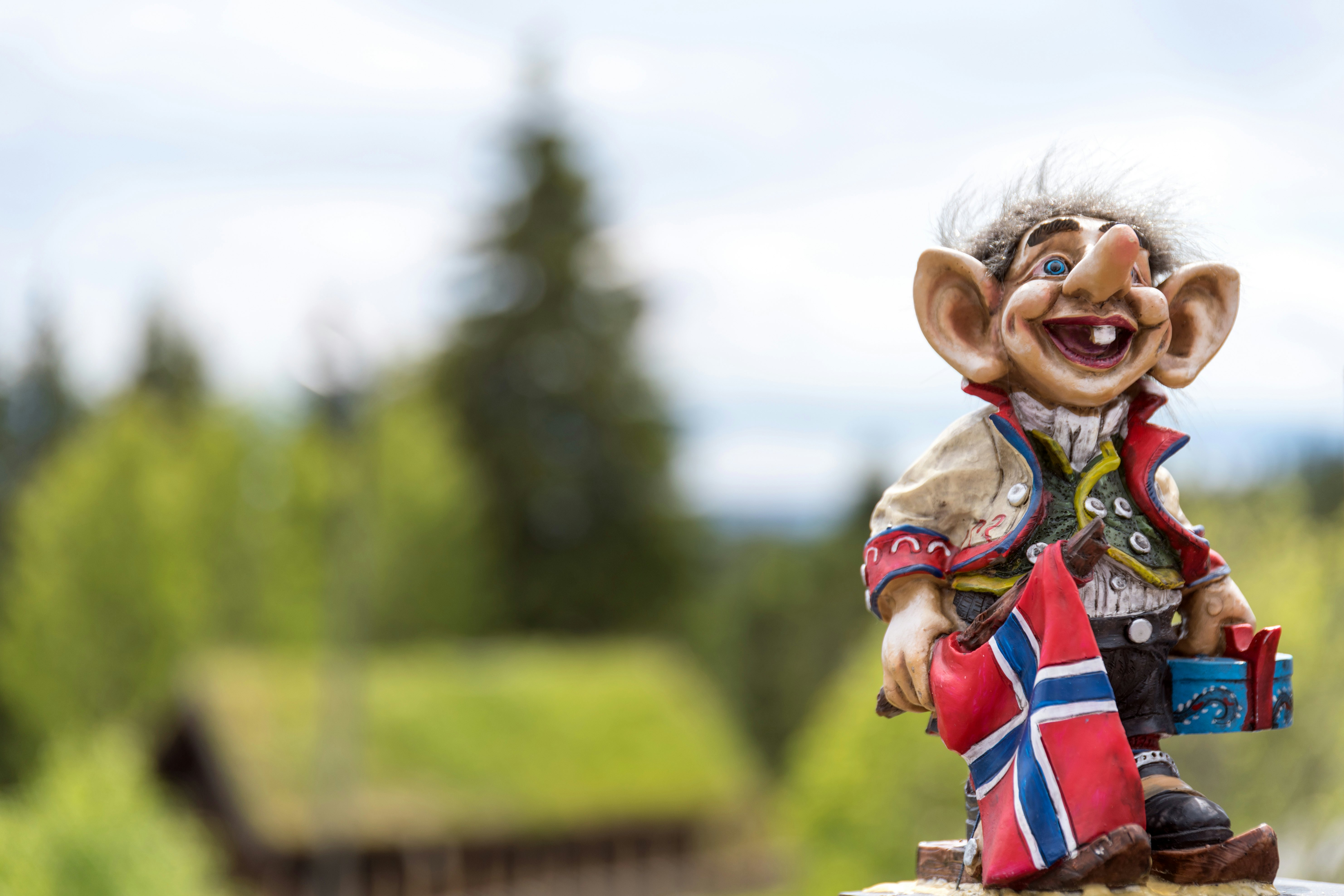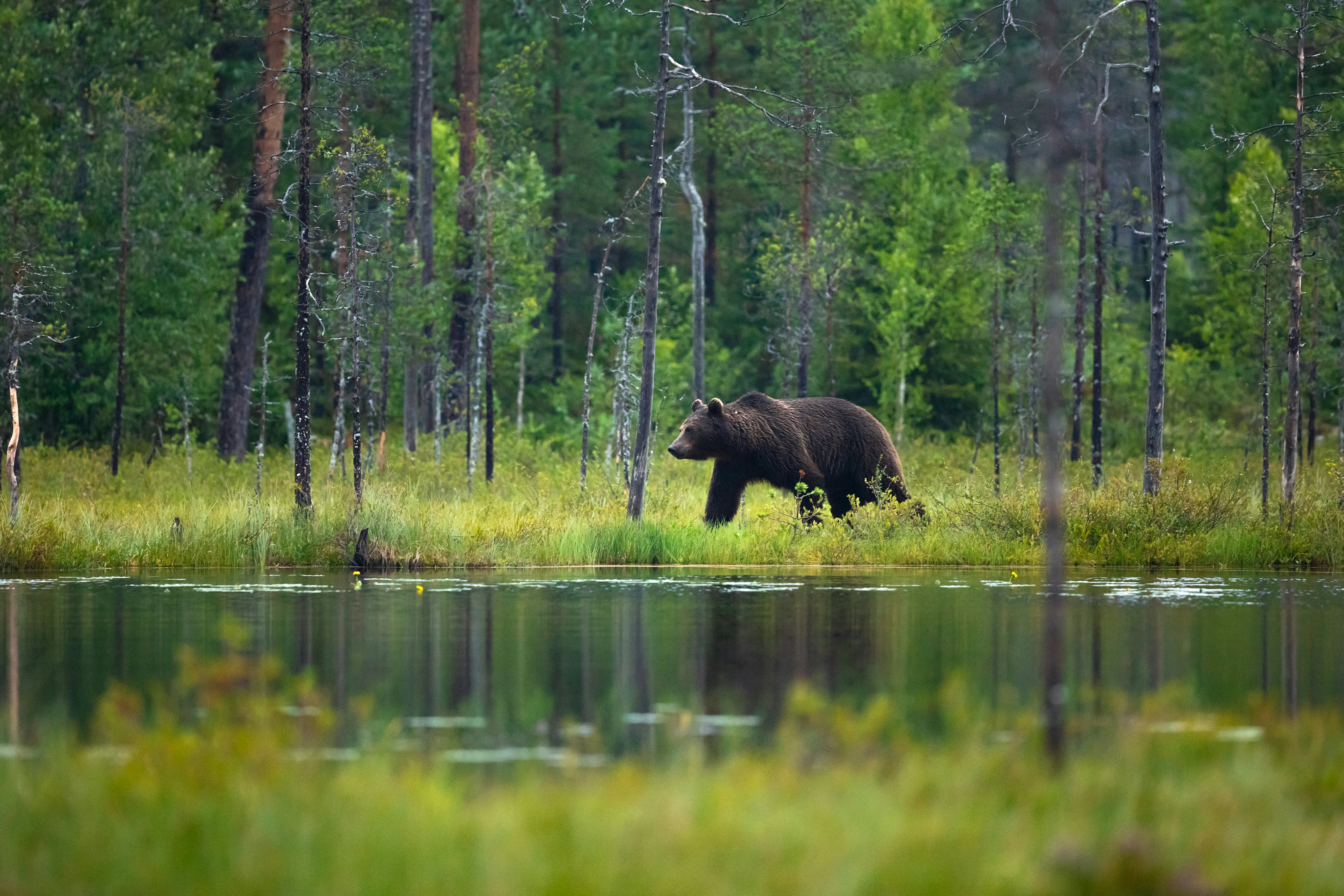
The 30 best countries, cities and regions to visit in 2025

Jan 10, 2022 • 8 min read

Norway's mountains, lakes and forests have inspired fantastical tales for generations © Iuliia Pilipeichenko / Getty Images / iStockphoto
Norway’s incredible landscapes have inspired travelers for generations. But long before that, they were the backbone of the country’s rich mythology and folklore.
In daily life, people would navigate lakes and fjords of unfathomable depth, deep and dark forests and mountains full of rocky peaks and whistling winds. These fantastical backdrops provided the inspiration for Norway's most memorable mythological creatures and legendary tales. In turn, the Norwegian wilderness came alive with the possibility of other-worldly encounters.
Nowadays, visitors are likely to spend a lot of time enjoying Norway’s incredible outdoors, through hiking, swimming or chasing the Northern Lights in the winter sky. But knowing the rich history and symbolism can deepen your appreciation of the beauty around you.

It’s likely the mountain you're trekking to was once a troll, caught out in the dawn light. Diving into a sparkling lake to cool down, you might be sharing it with a sea serpent of epic proportions, or a water horse with malevolent intentions. Or perhaps you will be granted the gift of music by the plunging waterfall - but only if your offering is good enough.
Here’s where to look for connections to myth and legend while exploring Norway’s great outdoors.
Trolls are the quintessential image of Norwegian myth and are most frequently seen today in souvenir shops. Their image is also carved into wood or stone that you might find on a hike or forest trail. Here they are diminutive and sometimes even smiling and friendly but according to Professor Terry Gunnell, an expert on folkloric traditions, they were once giants of the rocky landscape.

“Certainly anybody who's been to the west of Norway and going up to Trondheim and further is well aware of the idea of trolls. For example Jotunheimen; jotun means giant in one form or another, so this is the land of the giants. It’s the size of the landscape, it’s the power of the landscape.
“Trolls are very pagan beings, they’re the ones who created the landscape to a certain extent. They’re a development from ancient Norse, sometimes called the ice giants that created the world or the world was created out of. But generally they’re a threat to anybody who’s out in the wild areas of Norway. A hunter would often hear them talking between each other about how they were going to eat him. You can hear their voices within the landscape."
Where to find trolls: Landscape features all over Norway are said to be remnants of trolls who stayed out in the sun, including the famous Seven Sisters Mountains in Nordland. As the tale goes, they were once seven daughters who stayed out too late and were pursued until sunrise and petrified into these magnificent peaks. An even more famous example is Trolltunga, the iconic piece of rock found on many an Instagram picture; it translates literally as 'troll's tongue'.
Bergen's Trollskogen (Troll's Forest) has lots of walking trails suitable for all the family and full of bright, wooden sculptures of trolls to discover - don't worry, they are of the friendlier variety.
Where to experience Sámi art and culture in Norway

The musical sound of rushing water and the possibility of hidden creatures behind its curtain have created mythologies around Norway’s 300 plus waterfalls.
Terry Gunnel explains: “if you wanted to become a good musician – fiddle player and fiddle music is the central one in Norway – then you would go up to a waterfall and take a leg of lamb. If it's a good enough leg of lamb, this old guy will come out of the waterfall and teach you how to play particular tunes. If it's not big enough, then you'll just teach you how to tune the fiddle.
And if they teach you this tune, you have enough power to make everybody in the room dance down to the river and drown. This is a good excuse to say ‘I’d like a break to drink some beer at a wedding’ otherwise you could play the waterfall tune.”
Where to find the Fossegrim: He could be at home in any of Norway's hundreds of beautiful waterfalls. The thundering Kjosfossen near Flåm - and accessible on the Flåmsbana Railway - is a good bet though, as you can walk right to the water's edge with your offering. The twin waterfall Låtefossen, near the Hardangervidda National Park, is also particularly scenic. The water rushes under a bridge that you can walk or drive over (just be prepared to get wet).
A depiction of the spirit appears at the foot of a statue dedicated to violinist Ole Bull in Bergen with water rushing over it.

The idea of a water spirit in the shape of a horse may conjure romantic images of riding away into the sunset but for generations of Norwegian parents, they were the living – and very useful – embodiment of the danger.
“It's a very good way of advising children", Terry Gunnell says. "First of all about the living nature of lakes that depth, but also just the danger. It helps keep children away from lakes and safe.
Most of the stories tell of children who see a strange horse beside a lake and they get on the back of the horse. Stories can end in two ways; if one of the children happens to say ‘my God’ about something, then the horse goes away and leaves them in peace. Other rather nastier stories tell about children being taken into the lake and bits of lung and liver being found floating up to the top of the lake afterwards.”
Where to find the Nøkken: Tårntjernet lake in Jomfruland National Park was the inspiration behind artist Theodor Kittelsen's ethereal depictions of of the water spirit. Full of water lilies, the idyllic setting is now forever associated with the water horse that is more dangerous than it first appears.

Lake Seljord is supposedly home to the legendary serpent Selma. Eyewitness accounts of the serpent date back to 1750 but the motif will be familiar to many people around the world.
“They're very similar stories to the stories of Loch Ness and those found in Lagarfljót in Iceland. We get remnants of it in Tolkien’s The Hobbit; the idea of the hero versus the serpent. Monsters in lakes are known from Scotland to Iceland to Norway.”
Where to find Selma: Seljord is so proud of its association with the mythical serpent, it even has it emblazoned on its coat of arms. The best view is from the top of the Sea Serpent Tower (which has full instructions on what to do if you see it). For a small town, its mark on Norwegian culture is huge: many folk tales and songs are known to have been originally recorded in this area.
Driving Norway’s west coast through wild fjords and engineering marvels

Norway is home to both brown and polar bears and Terry Gunnell explains that the more human characteristics of the bear – the fact that they cry and stand on two legs - inspired many tales about them.
“The idea of the were-bear is very widely spread. They’re very similar stories to werewolf stories; a person changes into a bear and goes out into the wild and then has to be dealt with.”
Where to find bears: The Svalbard archipelago is home to around 3,000 polar bears. It is very dangerous to go alone; a guided tour or cruise is your best chance of spotting one as they roam freely. Brown bears are a precious rarity in Norway but you may get lucky and see one in Øvre Dividal National Park between June and mid-August.

One of the great natural wonders of the world, the Aurora Borealis is an awe-inspiring sight but in depths of the dark countryside the multitude of colors can be terrifying. Such awe-inspired old Sámi superstitions about the lights; that they were something to be feared and stayed away from. Some even believed that the lights carried the souls of the dead with them.
Where to see the Northern Lights: Northern Norway is one of the best places in the world to try and see the Northern Lights but with this elusive phenomenon, nothing is guaranteed. Peak season is between November and March - here are some tips on how to see the Northern Lights in 2022.

“We've got various words for them" says Terry Gunnell. "They've become elves in Iceland but the Norwegians don't use that word for them very commonly. They tend to be called the underground people or the Huldra, the hidden ones. Both are words that you use to avoid naming them.
There are lots of Norwegian stories about how Jesus was walking and this woman heard that he was going to be visiting and so she hid her unwashed children (or uglier children or sometimes the more beautiful children). He noticed that some of them were missing and said they would stay missing from now onwards. That’s the creation of the hidden people.
“They’re underground people. They're under our feet and you get lots of stories about people moving their farms [as cow waste falls] on the table of the people underneath and they aren’t very happy about it.”
Where to find Huldra: Huldra are often associated with forests in Norway so you won't need to look far in this green landscape to find their home. The Eventyrskogen (Fairytale Forest) in Årdal is a picturesque easy walking trail with lots of references to elves, trolls and other Norwegian folklore tales.
For more on how the 'underground people' interact with farms, Skaldegard offers storytelling including tales of the Huldra on a private visit.
You might also like:
Explore Norway’s otherworldly sights and scenery on its best driving roads
13 essential Norwegian experiences
Norway's 9 top hikes
Norway is on our 2022 Best in Travel list. For more stories from some of the world’s most exciting destinations click here.
Safety recommendations and restrictions during a pandemic can change rapidly. Lonely Planet recommends that travelers always check with local authorities for up-to-date guidance before traveling during Covid-19.